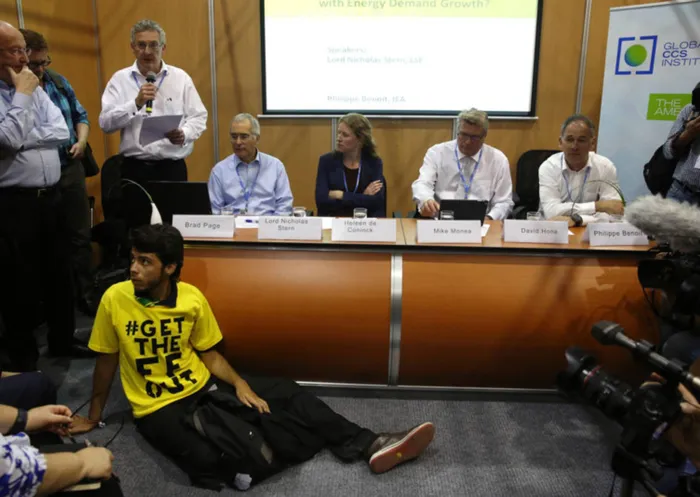US takes heat at climate talks

An activist wearing a yellow shirt with a text that reads '# Get the FF Out,' disrupts a discussion during the conference on climate change in Lima, Peru. An activist wearing a yellow shirt with a text that reads '# Get the FF Out,' disrupts a discussion during the conference on climate change in Lima, Peru.
Lima - Washington is on track to meet its targets for reducing emissions in heat-trapping greenhouse gases despite an uptick last year, US officials insisted at climate talks on Monday.
Quizzed by rich and poor countries about its efforts against global warming, President Barack Obama's envoys sought to explain how exactly the US plans to cut emissions 17 percent by 2020 based on 2005 levels.
Emissions were down about 10 percent but rose slightly last year and in early 2014 due to an “extraordinarily cold winter” that required high energy consumption, deputy US climate adviser Rick Duke said in response to a question from China. He said emissions are projected to be down next year.
South Africa challenged whether the US target for 2020 is ambitious enough, asking how much of the emissions drop since 2005 has been due to recession.
Duke said about two-thirds was policy-driven, with the rest attributable to factors including the recession and a switch from high-polluting coal to natural gas in power generation.
Since the US Congress voted down climate legislation in 2009, Obama has largely leaned on existing laws to make progress - boosting fuel standards for cars and trucks and proposing stricter controls on carbon pollution from power plants.
“I think we are making good progress,” Todd Stern, the US delegation chief, told reporters at his first news conference at the two-week negotiations.
Experts said the jury is still out on whether the US target can be reached.
“The US definitely has a shot, if it continues to implement measures under its Climate Action Plan. But it is by no means guaranteed,” said Alden Meyer of the Union of Concerned Scientists.
Jake Schmidt of the Natural Resource Defence Council said more measures are needed, including reducing methane loss in leaks from refining and drilling for oil and gas as well as finding alternatives for the super-potent greenhouse gases used in air conditioners and refrigerators.
The White House pledged last month to lower US carbon pollution 26 percent to 28 percent from 2005 levels by 2025 as part of the negotiations for a global climate pact next year. Those goals are expected to face stiff resistance from climate-skeptical Republicans in Congress.
“Ultimately the US must confront its profound political divide on climate change to provide certainty that it will meet its pledges,” said Paul Bledsoe, who worked on climate issues in the Clinton White House. - Sapa-AP